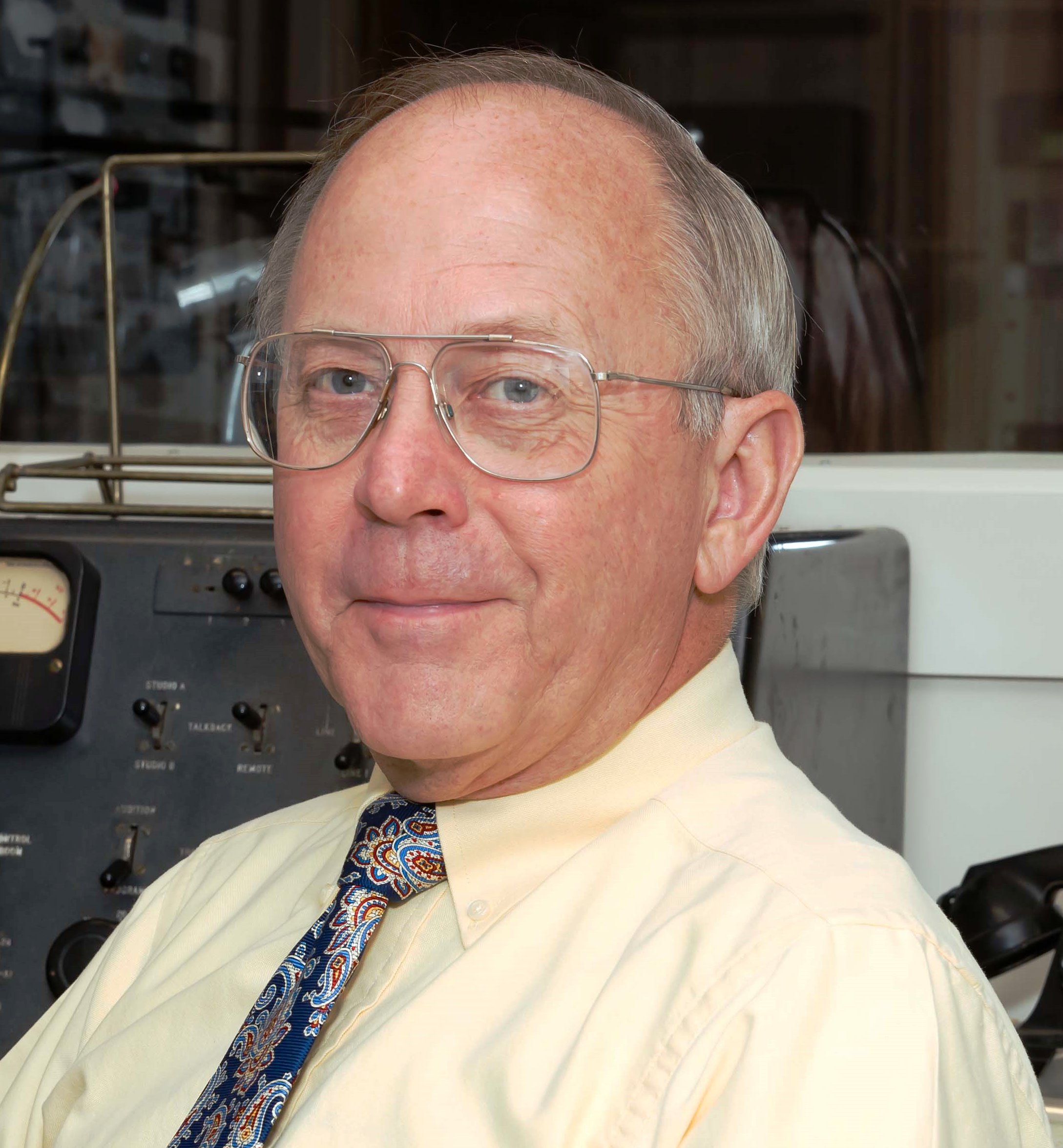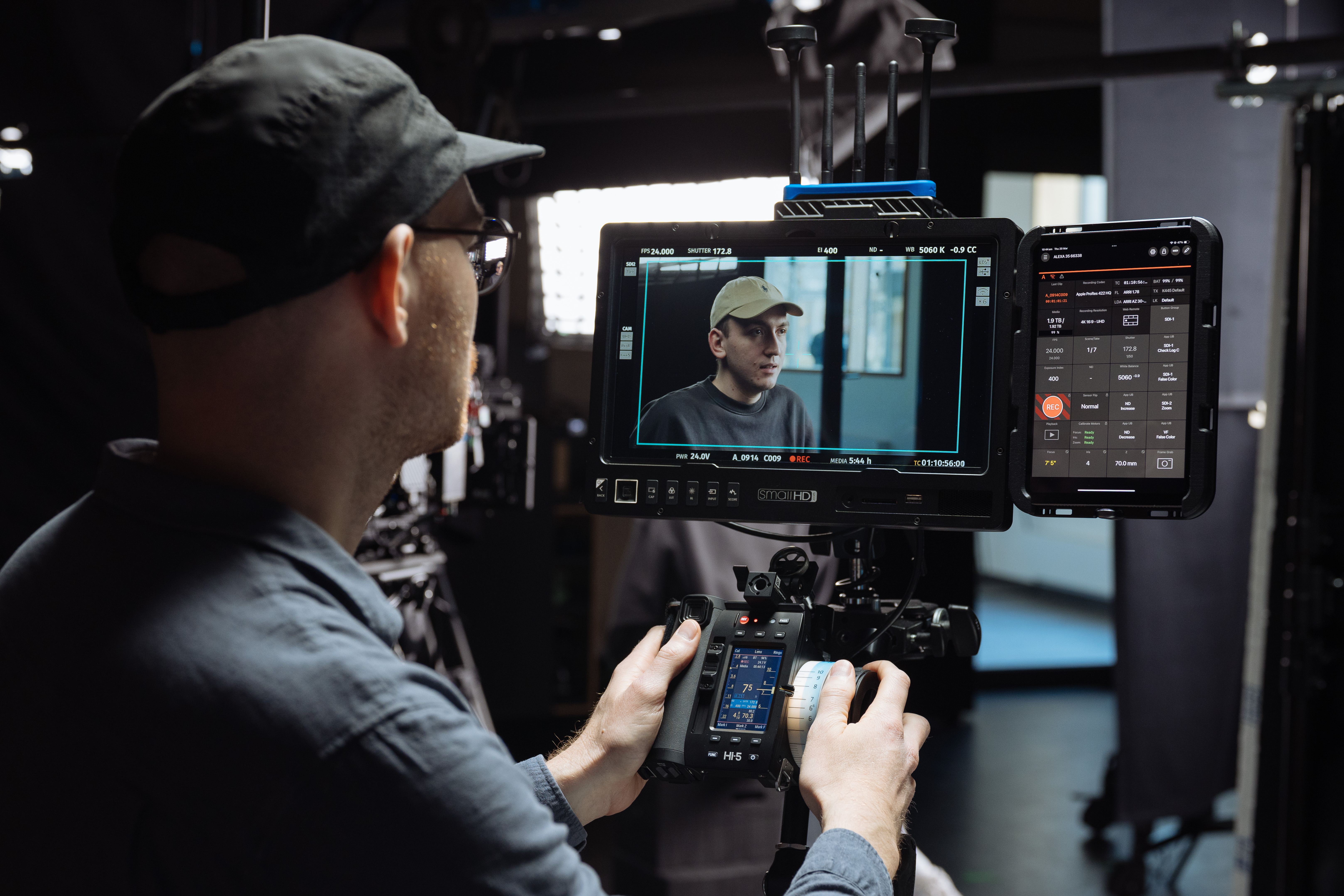Wheatstone's 37 Year Audio Legacy
(This is the ninth in a series of articles saluting broadcasting industry manufacturers that continue to produce their products on American soil with American labor.)
NEW BERN, N.C.—If I had to pick an old-line all-American community with a long history to its name, I couldn't do much better than this one. New Bern is certainly not your average planned community or factory town. It's actually the second-oldest city in North Carolina, and has been here longer than there's been a US-of-A, celebrating its 300th birthday in 2010. And New Bern's 28,000 inhabitants have a lot to celebrate about: scenic coastal waterways, beautiful homes and gardens, music and performing arts centers, and a pristine downtown with many very old and well-maintained buildings and landmarks (a pharmacy here was the birthplace of Pepsi Cola in the 1890s). New Bern is also the home of some very new and exciting businesses. One of these is the Wheatstone Corporation.
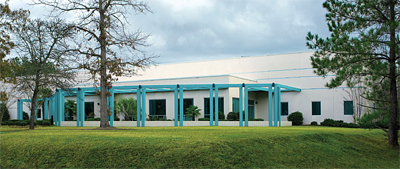
Wheatstone's modern New Bern, N.C. facility houses manufacturing, design and other company operations. Unlike Pepsi, Wheatstone didn't start here, but it has been part of the New Bern landscape for about a quarter of its 37-year existence. (Or if you're really a stickler for accuracy, you could say Wheatstone has been here for closer to a third of its life, as this audio giant wasn't officially Wheatstone until 1981.) Regardless of how you count it, Wheatstone is an important part of New Bern, employing some 90 persons from the area, and putting this community on the world map as the home of some unparalleled audio products.
THE BEGINNINGS
Like a lot of electronics businesses, Wheatstone started out in a small way. Its founder, and now CEO, Gary Snow, was an electronics hobbyist back in the 1970s who was especially interested in audio. After some encouragement by friends, he produced a "for sale" product in 1974—a simple mixer for disco applications. Snow chose the name "Audioarts" for his nascent company, which was then located in Bethany, Conn. Word about the mixer and Audioarts soon spread, and within a few years, Audioarts products were being sold by dealers across the country. The company's product line expanded too, with larger and larger mixing platforms to meet the demands of both recording studios and performing groups.
In 1981 the company officially incorporated under the name Wheatstone. When asked about the origin of the new name, Snow explained that it was simple: "It came from the classic electronics lab instrument, the Wheatstone Bridge."
Soon the Wheatstone name was appearing alongside the Audioarts product family on other entries, including recording, production and live audio broadcast consoles.
This period of rapid growth put a strain on the small Bethany building being used as a factory, and in 1986 Snow decided to relocate operations to his place of birth, Syracuse, N.Y. After the relocation, Wheatstone's operations and product catalog kept on expanding, with the first console exclusively designed for television use appearing 1991.
After 10 years or so, Wheatstone's business grew to the extent that the Syracuse facility was too small to support it, and its founder began casting about for another location to set up shop. After weighing several options, Snow, a lover of boats and open water, zeroed in on this North Carolina community as Wheatstone's next home. (Syracuse winters may have been a factor in that decision also.)
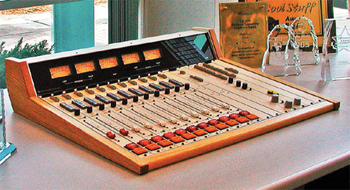
This model A-500 was one of the first audio radio console products to bear the Wheatstone name. It was sold to WGBH-FM in Boston, Mass. in 1985, and is now on display in the company's lobby. The console remained in continuous service for more than 20 years before being retired. A 52,000 square-foot state-of-the-art facility was soon completed just outside New Bern, and the Syracuse operation closed its doors for the last time in 1998.
DOING IT ALL UNDER ONE ROOF
When compared to many other equipment manufacturers these days, Wheatstone is remarkably self-sufficient. According to Jay Tyler, the company's director of sales, just about the only items not made in the New Bern facility are printed circuit cards. He explained that artwork files can be e-mailed to an outside firm, and the completed multi-layer cards delivered in just a day or so.
So, aside from the cards and the circuit components mounted on them, everything that goes into a Wheatstone, Audioarts or Vorsis [the company's audio processing equipment line] product is homegrown in New Bern. This includes all of the metal work, console frame components, circuit card assembly, silk screening, and painting operations.
"We don't build a lot of product and then stockpile it either," said Tyler. "Just about everything that goes out the door is customized to the customer's individual requirements."
Manufacturing equipment includes a computer-controlled industrial laser for cutting panels and other metal components, an equally massive automated bending brake, state-of-the-art high-speed robotic machinery for placing surface mount components on circuit cards, a high-capacity "pizza oven" for performing component/circuit card soldering operations, a large-scale computer-driven router for turning large sheets of high-density fiberboard into console side panels, a complete powder coating operation, and just to round things off, a silk screening department for labeling everything.
Such peripheral product manufacturing items as product photography, circuit board layout, and the writing of instruction manuals are also done in the Wheatstone facility.
"We can do it all right here," said Tyler. "Woodworking, metalworking, cable harness fabrication, board assembly and testing; we even laser etch the lettering on our switches and control buttons. We really make a lot of stuff here under one roof."
LEAVING NOTHING TO CHANCE
Even though Wheatstone has accelerated its production flow with the latest in high tech manufacturing technology, nothing leaves the premises until it has been thoroughly tested, aged and burned in.
"Nothing is ever boxed until it's been through final testing," said Tyler.
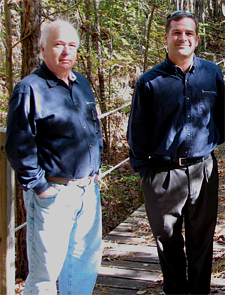
Gary Snow, Wheatstone founder and CEO; and Jay Tyler, director of sales pose on the "Wheatstone Bridge." In keeping with this policy, one area of the pristine Wheatstone plant has been intentionally made hostile and unpleasant. This is its power supply burn-in chamber. All equipment power supplies are tested under full load for an extended period. Resistive loads line the walls of the room and even on a cool day, it's always uncomfortably warm.
Elsewhere (and in a slightly more environmentally pleasant part of the operation), other units are stacked in racks for their own burn-in testing.
In still another area, a lab stays busy checking products for compliance with the FCC's part 15 regulations governing RFI.
These and other QC operations ensure that nothing is shipped unless it's the absolute best it can be.
KEEPING IT ALL AMERICAN-MADE
In the current climate of rising costs and emphasis on boosting the bottom line, many old-line American companies have succumbed and sent production off shore.
When Snow was asked why Wheatstone hadn't followed suit and outsourced operations, he was quick to respond.
"There are two main reasons—quality control and production schedules. We're very concerned about quality and uniformity. We measure each and every lot of sheet metal that comes in. We automatically reject it if it's even a few thousandths off. Someone offshore might not be this careful. This could mean a frame that didn't fit together like it should."
With the company's long-standing reputation for excellence in product quality and performance, anything less than perfection is unacceptable. "We want to be sure that it lives up to the Wheatstone name before it goes out the door," Snow said. "This just wouldn't be possible if our assembly work was done elsewhere."
Tyler pointed out that there are also some other advantages in keeping operations under one roof—tight control of production schedules in filling customers' orders, or in fabricating a new or custom piece of gear. "If someone has an idea for a new product, or if we need to run off something special to show in our booth at the NAB Show, we can do it in just a few days," he said. "That's the real advantage of a centralized operation staffed with workers with established skill sets and backed by manufacturing equipment under our control."
In addition to the latest in automated production machinery, the Wheatstone operation maintains a 5,000 square-foot parts and sub-assembly stock room.
"This allows us to provide a very rapid turnaround," Tyler said. "Typically, we're producing 25 to 30 finished products each week. If we went offshore we would be at the mercy of third-party sources. A customer just doesn't want to hear that his order is going to be delayed because a plant in Asia is taking a month off. We're in control of our destiny in every way."
Wheatstone audio products were conceived and born in America, and have become synonymous with high quality American-made broadcasting technology. When Tyler was asked if he thought any part of the operation might ever be relocated outside the country, his reply was "never."
"Wheatstone and Made in USA go together. They always have, and they always will."
Get the TV Tech Newsletter
The professional video industry's #1 source for news, trends and product and tech information. Sign up below.
James E. O’Neal has more than 50 years of experience in the broadcast arena, serving for nearly 37 years as a television broadcast engineer and, following his retirement from that field in 2005, moving into journalism as technology editor for TV Technology for almost the next decade. He continues to provide content for this publication, as well as sister publication Radio World, and others. He authored the chapter on HF shortwave radio for the 11th Edition of the NAB Engineering Handbook, and serves as editor-in-chief of the IEEE’s Broadcast Technology publication, and as associate editor of the SMPTE Motion Imaging Journal. He is a SMPTE Life Fellow, and a Life Member of the IEEE and the SBE.
